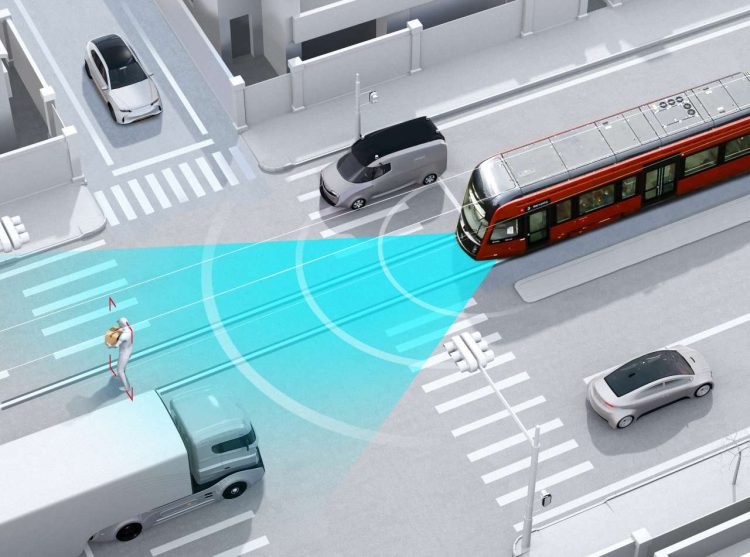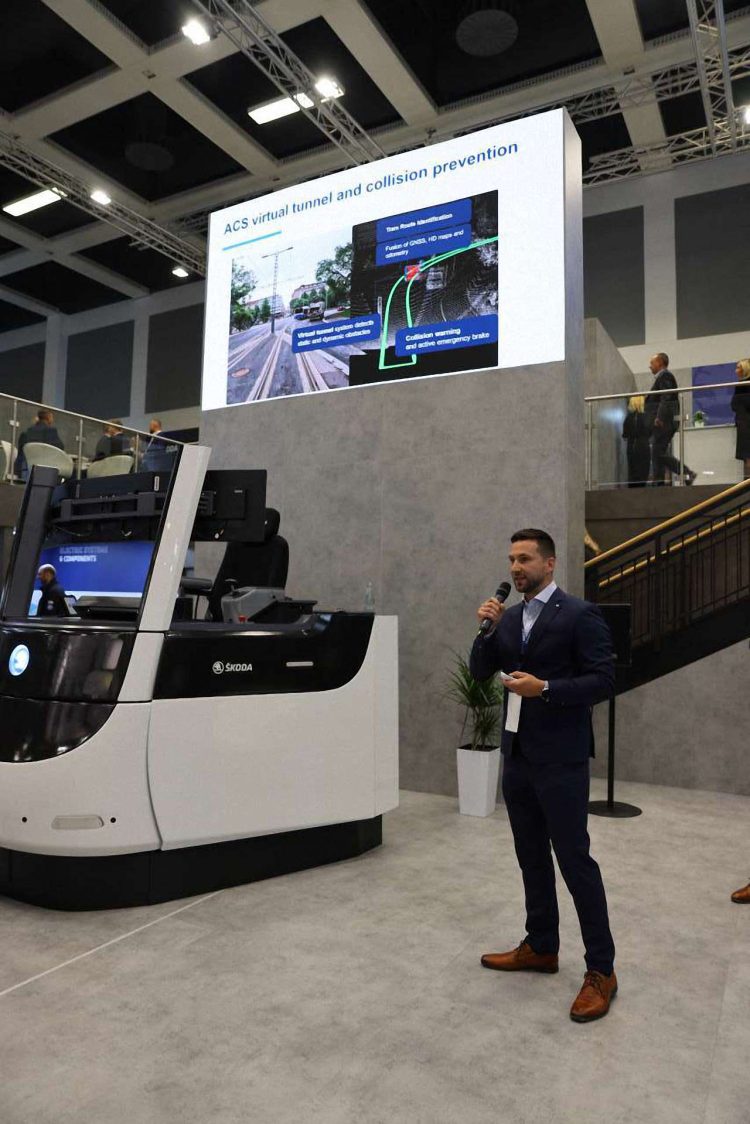At this year’s Innotrans held in Berlin, Škoda Group announced details of its anti-collision systems for autonomous vehicles.
Although the future of mobility is seen to be driverless vehicles moving at short intervals in succession, they must incorporate systems to ensure the safety of passengers and other road users. These include anti-collision systems that can observe their surroundings and identify obstacles.

Transport operators are already looking to implement anti-collision to both improve passenger safety and reduce damage to vehicles in depots and whilst in operation. To meet this demand, Škoda Group’s development centre is developing its own anti-collision system to provide transport companies with a workable solution.
Škoda Group’s system works by creating a virtual tunnel in front of the tram where it can detect all static and dynamic obstacles within its range of vision. If it detects an obstacle, the system will alert the driver and activate the emergency brake.

The whole area in front of the vehicle is monitored by a sensor suite that includes LiDAR, an IMU unit, and a camera.
- The LiDAR creates a 3D map of its environment within a range of 100 -150 metres both horizontal and vertical directions.
- The IMU unit sends vehicle tilt information to the system, and ensures that the output of the anti-collision system sensors is aligned to the track profile, which helps to locate the tram on the track accurately.
- The camera provides high-resolution 2D images to capture more details.
The anti-collision system can be supplemented with other features to tailor it to the requirements of individual customers. One possibility is, for example, to adapt the driver alarm so that its sound level depends on the severity of the impending collision.

Škoda Group plans to launch its anti-collision system next year. It is also working with other companies within the PPF Group to develop an autonomous tram that is expected to begin trials within a few years on a closed circuit test track at Pilsen in the Czech Republic.
Michal Mrázek, Software Engineer of autonomous technologies at Škoda Group, said: “Our anti-collision system has not only completed the first phase of development but has already undergone six months of testing on trams in Tampere, where we are obtaining hugely valuable data directly from traffic.
“Compared to competing products, our product has the advantage that the entire track in the city is mapped in detail, making the whole system much more accurate and efficient. In addition, the anti-collision system can only be upgraded with new functionalities through software updates and the sensor sets will not need to be changed, at most to add new elements. This will bring significant financial savings to transport operators.”





Responses